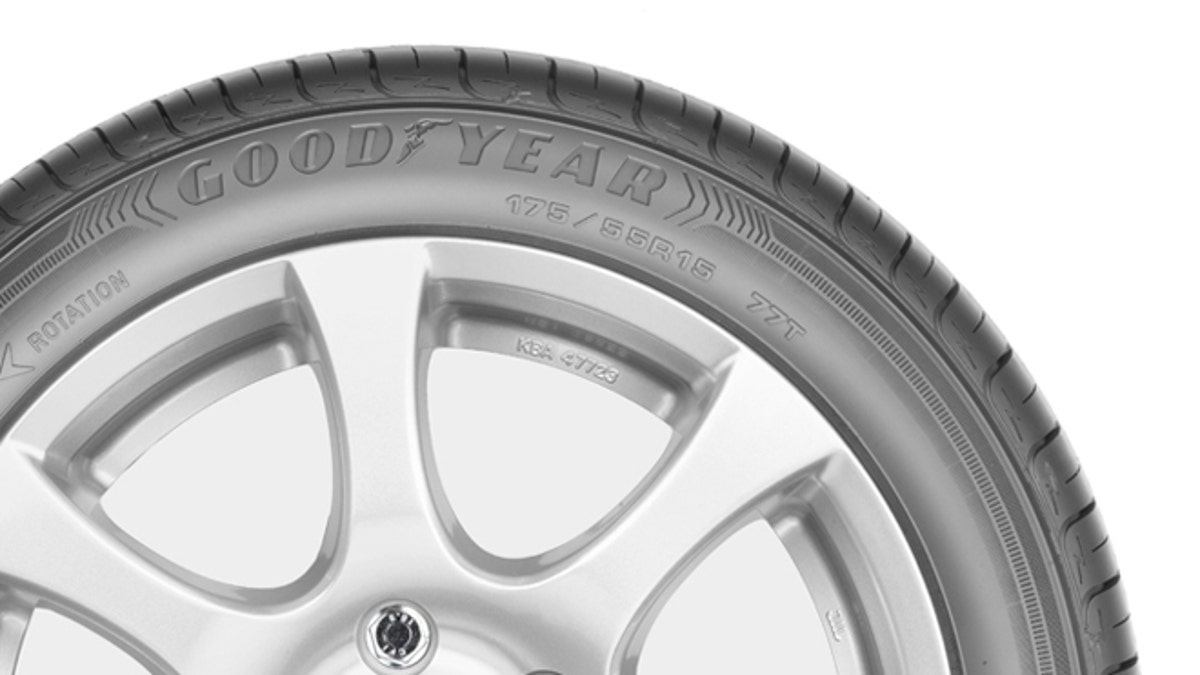
(Goodyear)
No, “UTQG” is not a play dictated by Peyton Manning during a Super Bowl huddle. The Uniform Tire Quality Grade is a comparative assessment applied to most car tires (excluding winter tires) to help consumers make informed decisions. The manufacturers grade the tires themselves for temperature, traction, and tread wear. The system has been essentially unchanged for decades, despite significant advances in tire engineering. And, like a set of worn tires, UTQG is showing its age.
Tires must meet their assigned grades, but the scoring isn’t precise, enabling companies to approach this strategically according to their marketing plans. As a result, even though the ratings are right on tires’ sidewalls, comparing brands is still difficult for shoppers. (See our complete guide to tires to find the best tire for your car, SUV, or truck.)
The federal government is keenly aware of the program’s shortcomings, and it is working out the details on a new tire fuel-efficiency grading system that includes traction (safety) and tread wear (durability).
How does the UTQG work?
Tread wear, for example, is not based on a mileage projection, but rather a numeric index of how well a tire wears in comparison to a reference tire. For instance, a tire rated at “200” will wear twice as long as a tire graded “100.” That’s good, but it doesn’t tell how long the tire will last. For most consumers, the manufacturer tread-wear warranty in miles is not only more intuitive, but it also tends to be a better barometer since the manufacturer has to pay if the tire doesn’t achieve the warranty promised.
More From Consumer Reports
The traction grade looks at the level of grip on a wet surface. Most ultra-high-performance tires achieve the best grade: AA. Most car tires get the next best grade of A; less than 22 percent of the tires have a B grade; and only one tire (out of more than 2,400 models) has the honor of a C grade. Not much of a guide, but we certainly recommend buying a tire with no less than an A grade for traction.
Designed during the advent of the radial tire, the temperature grade is a measure of how well a tire will resist heat buildup. More than a third of the tires achieve the highest grade of A, followed by 59 percent achieving a B grade, and about 11 percent get the lowest grade of C. Look for a tire with a B grade or higher.
The UTQG grades can be found on Consumer Reports' tire model pages, from the government website safercar.gov, and on the sidewall of each tire. For a detailed look, check out the Tire Tracker developed by a group from the 2014 class of Knight-Mozilla OpenNews Fellows. Mining the government’s database, Tire Tracker makes it simple to search out size, brand, and model.
When buying a tire, we feel consumers need even more, and better, information than UTQG provides. Based on our extensive tire testing, we provide a comprehensive buying guide and tire ratings.
—Gene Petersen
Copyright © 2005-2014 Consumers Union of U.S., Inc. No reproduction, in whole or in part, without written permission. Consumer Reports has no relationship with any advertisers on this site.



















